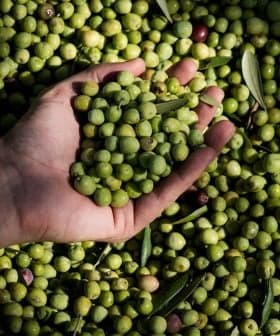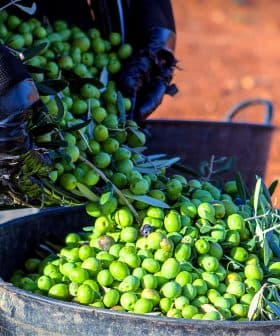New Phenolic Compounds Unveiled at Harvard Conference
The “Mediterranean Diet and Workplace Health” conference at Harvard School of Public Health highlighted the importance of olive oil in the Mediterranean diet, emphasizing moderate consumption of healthy fats like olive oil and nuts. Researchers identified two new compounds in olive oil, developed a quick method to measure oleocanthal and oleacein, and found that high oleocanthal content in olive oil was more effective in reducing LDL oxidation in mice, suggesting potential benefits for Greek olive oil producers.

The “Mediterranean Diet and Workplace Health” conference was held at the Harvard School of Public Health in Boston, September 27 and 28 with participants from several countries and numerous lectures highlighting the key role of olive oil for health protection within the framework of the Mediterranean diet.
In contrast to earlier and outdated recommendations for low-fat diets, the new messages are strongly in favor of moderate consumption of healthy fats of mainly olive oil and nuts, which are seen as integral to a healthy and complete diet.
Two scientists attending the conference from Greece, Dr. Prokopios Magiatis and Dr. Eleni Melliou, made three announcements concerning the work on olive oil polyphenols:
- Two new compounds found in olive oil, oleomisssional and oleokoronal, have been identified and so named
- A new test, called the Melliou-Magiatis method, can measure the amount of oleocanthal and oleacein in olive oil using a colorimetric app with a kit in the field
- Tests on mice indicate oleocanthal in combination with oleacein showed a better result in lowering LDL oxidation than oleacein on its own.
Discussing the discovery of the two compounds never before identified in olive oil, Magiatis explained “Since we discovered the NMR (Nuclear Magnetic Resonance) method for measuring specific phenols in olive oil, we often saw some peaks in the spectrum for compounds we could not identify. It took us 2 years to identify these two compounds, which we named: oleomisssional and oleokoronal.”
Magiatis and Melliou first encountered these peaks in olive oils from Berkeley Olive Grove 1913 and Apollo Olive Oil from California during research studies at UC Davis Olive Center, from Koroneiki olive oil from Messinia and from Paleopanagia in Lakonia, Greece during their work at the University of Athens.
“It will take more research to determine the exact role or specific health benefits of these two newly discovered compounds,” Magiatis explained. “This is the first time new phenolic compounds have been identified in olive oil since oleocanthal was identified in 1993. The two compounds are related to oleuropein and ligstroside aglycons and most probably should have similar bitter or pungent sensory properties. The two compounds are most commonly found in olive oils produced with short malaxation time.”
Dr. Melliou described the invention of a new simple and fast colorimetric assay method to measure oleocanthal and oleacein found in olive oil called the Melliou-Magiatis method. “It takes as little as 20 minutes to get a reading. A simple kit comprised of a vial, two reagents and olive oil are combined. This results in a color change from yellow to dark green in the separated liquid. The greener the liquid the higher the amount of combined oleocanthal and oleacein. The total amount of these two compounds can be calculated by a colorimetric app using an iPhone or an android phone. The amount can also be estimated with a good rate of accuracy of about 80 – 90 percent, depending on the experience of the user, by a visual comparison of the liquid with a color chart.”
Finally, Dr. Magiatis presented test results conducted with mice fed with olive oils containing different amounts of oleocanthal and oleacein to determine if oleocanthal played a role in reducing LDL oxidation.
Magiatis explained what motivated them to conduct this experiment: “Some doubt was created earlier this year by some EU regulators and local Greek authorities on whether oleocanthal should be included in the measurement of polyphenols in order to comply with the EU labeling regulation 432/2012. So we decided to conduct our own research in order to determine the role oleocanthal plays in reducing LDL oxidation.”
So the Magiatis-Melliou team conducted tests on mice who were fed for 50 days a high fat diet augmented by anextra virgin olive oil containing varying amounts of oleocanthal and hydroxytyrosol derivatives such as oleacein. More
precisely the olive oils we used were the following: one with zero phenolics, one with only oleocanthal, and two more with the same amounts of hydroxytyrosol derivatives but with different levels of oleocanthal (one low and one high).
Despite the last two oils having exactly the same amounts of hydroxytyrosol derivatives, the oil with high oleocanthal was much more effective in reducing LDL oxidation.
The scientists suggested the finding could help settle the debate on whether the measurement of oleocanthal should be included in the EU labeling regulation; an important issue for Greek olive oil producers whose oils tend to have higher amounts of oleocanthal than oleacein.
Magiatis went on to say: “This test is not conclusive scientific proof but it does indicate a synergistic relationship between oleocanthal and oleacein in reducing LDL oxidation” The next step would be to conduct human trials.
Dr. Melliou added: “The scientific evidence is growing about the importance of the olive tree, its fruit and its oil. The reason it was a central theme of the Ancient Hellenic culture for athletic victory, peace, nutrition, and medicine is becoming more obvious.”
Panagiotis Diamantakos, Nikolaos Demertzis, Michail Rallis, Angeliki Kourounakis, Eleni Melliou and Prokopios Magiatis — all from the University of Athens, Faculty of Pharmacy — contributed to this article.









